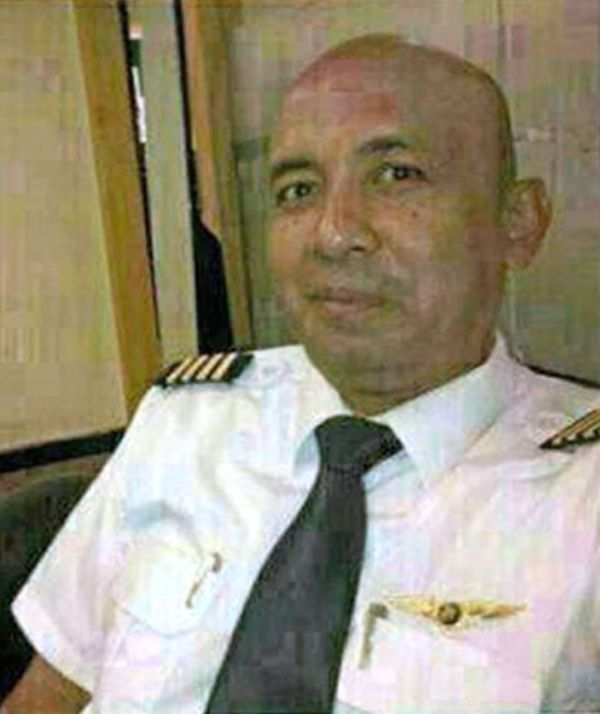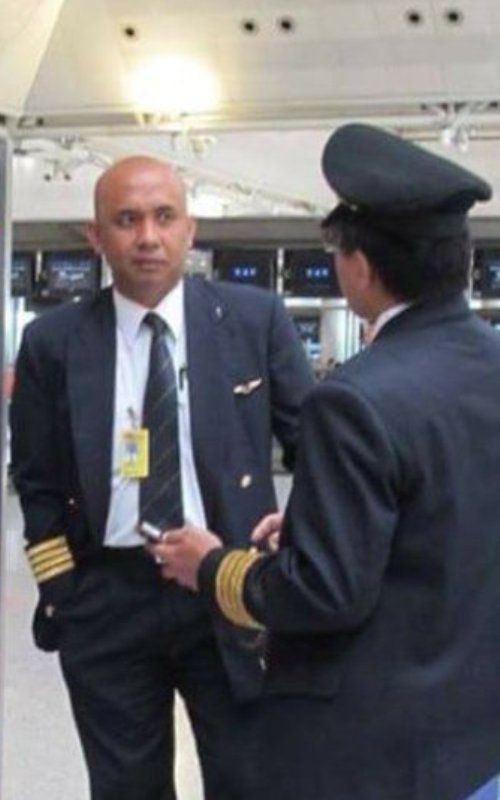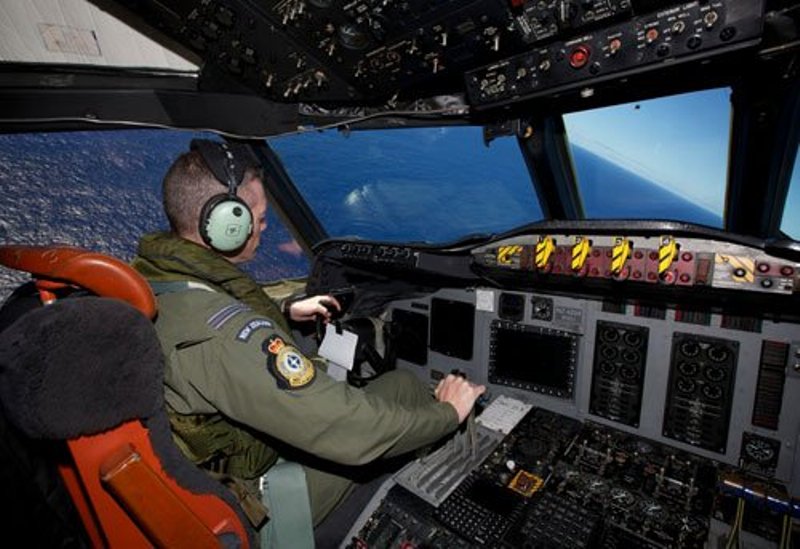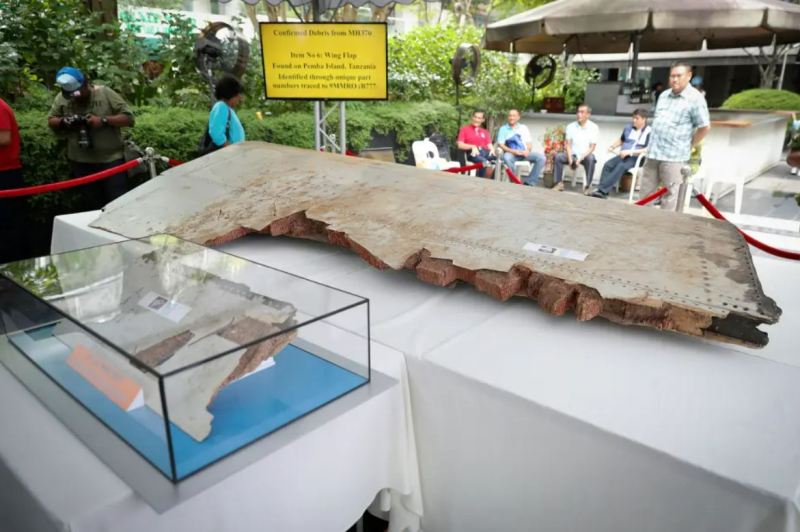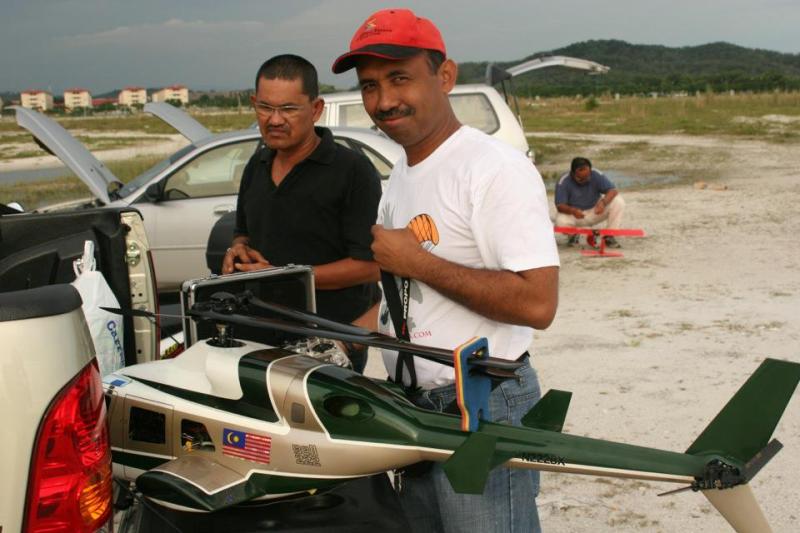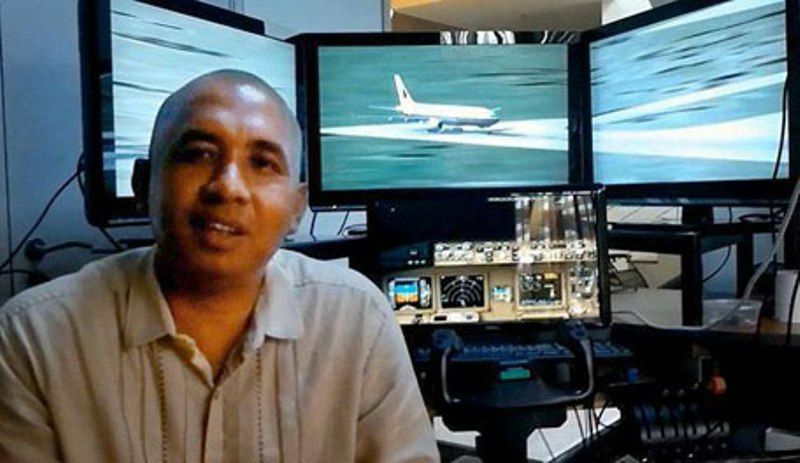Zaharie Ahmad Shah Age, Death, Wife, Family, Biography & More
Quick Info→
Age: 52 Years
Wife: Faizah Khanum Mustafa Khan
Religion: Islam
| Bio/Wiki | |
|---|---|
| Profession | Pilot |
| Known for | Being the Pilot-in-Command (PIC) of Malaysia Airlines Flight 370 that disappeared in 2014 along with 239 passengers (including 12 crew members) while flying from Kuala Lumpur International Airport in Malaysia to its destination, Beijing Capital International Airport |
| Physical Stats & More | |
| Height (approx.) | in centimeters- 173 cm in meters- 1.73 m in feet & inches- 5’ 8” |
| Eye Colour | Black |
| Hair Colour | Bald |
| Career (Aviation) | |
| Airline | Malaysia Airlines |
| Service Years | 1981-2014 |
| Flying Experience | 18423:40 hours |
| MH370 (Timeline) | 7 March 2014 • 22:50 – Captain Zaharie Ahmad Shah signed in for duty. • 23:15 – First Officer Fariq Abdul Hamid signed in for duty. 8 March 2014 • 00:00 – The aircraft’s Satellite Data Unit (SDU) logged onto the Inmarsat satellite communication network. • 00:27 – ATC gave Flight 370 clearance to push back from the gate. • 00:40:37 – ATC gave Flight 370 clearance to take off. • 00:42 – Flight 370 took off from runway 32R at Kuala Lumpur International Airport. • 00:42:53 – ATC gave Flight 370 clearance to climb to Flight Level, an aircraft’s altitude at the standard air pressure, of 180 and proceed directly to waypoint IGARI, the point where responsibility for the flight is passed from Kuala Lumpur Area Control Centre (ACC) to Ho Chi Minh Area Control Centre (ACC). • 00:46:39 – Flight 370 was transferred from the airport’s ATC to Lumpur Radar ATC. Both the airport and Lumpur Radar ATC are based at the Kuala Lumpur Air Traffic Control Centre (KL ATCC). • 00:46:58 – ATC gave Flight 370 clearance to climb to Flight Level 250; approximately 25,000 feet (7,600 metres). • 00:50:08 – ATC gave Flight 370 clearance to climb to Flight Level 350; approximately 35,000 feet (11,000 metres). • 01:01:17 – Captain Zaharie Ahmad Shah informed ATC that Flight 370 has reached Flight Level 350. • 01:07:48 – The final data transmission from Flight 370 using the Aircraft Communication Addressing and Reporting System (ACARS) protocol was made. • 01:07:48 – 02:03:41 – The satellite communication link was lost sometime during this period. • 01:07:56 – Captain Zaharie Ahmad Shah confirmed that Flight 370 was flying at Flight Level 350. • 01:19:30 – Kuala Lumpur Air Traffic Control Centre (KL ATCC) instructed the crew to contact Ho Chi Minh Air Traffic Control Centre (HCM ATCC). The aircraft passed waypoint IGARI as the captain replied, “Good night. Malaysian three seven zero.” This was the final voice contact with Flight 370. • 01:21:13 – The position symbol of Flight 370 disappeared from KL ATCC radar, indicating the aircraft’s transponder was no longer functioning. Malaysian military radar continued to track the aircraft, which “almost immediately” began a turn to the left until it was travelling in a south-westerly direction. • 01:30 – Another aircraft tried to contact Flight 370 at the request of HCM ATCC. Mumbling and radio static was heard in reply. • 01:37 – An expected half-hourly ACARS data transmission was not received. • 01:39 – Ho Chi Minh Air Traffic Control Centre (HCM ATCC) contacted KL ATCC to inquire about Flight 370 as verbal contact was not established and said that Flight 370 disappeared from its radar screens near waypoint BITOD, a waypoint after IGARI within the Ho Chi Minh Flight Infomation Region (FIR). KL ATCC responded that Flight 370 did not return to its frequency after passing the waypoint IGARI. • 01:46 – HCM ATCC contacted KL ATCC and informed them that radar contact with Flight 370 was established near IGARI but lost near BITOD and that verbal contact was never established. • 01:52 – Flight 370 reached the southern end of Penang Island, which is part of the state of Penang on the west coast of Peninsular Malaysia. First Officer Fariq Abdul Hamid’s cellphone was registered with a cell tower below; however, no other data was transmitted. Flight 370 then turned towards the northwest along the Strait of Malacca, a narrow stretch of water between the Malay Peninsula to the northeast and the Indonesian island of Sumatra to the southwest, connecting the Andaman Sea and the South China Sea. • 01:57 – Despite attempts on various frequencies and with aircraft in the vicinity, HCM ATCC notified KL ATCC that there had been no contact with Flight 370. • 02:03:41 – Malaysia Airlines dispatch centre sent a message to the cockpit instructing pilots to contact Vietnam ATC; however, there was no response. Multiple ground-to-aircraft ACARS data requests were transmitted between 02:03-02:05, but the aircraft’s satellite data unit failed to acknowledge them. • 02:03:48 – After receiving information from Malaysia Airlines’ operations centre, KL ATCC contacted HCM ATCC and conveyed that Flight 370 had entered Cambodian airspace. • 02:15 – Upon querying Malaysia Airlines’ operations centre, KL ATCC received a response that they were able to establish signal communication with Flight 370, which was confirmed to be in Cambodian airspace. • 02:18 – KL ATCC contacted HCM ATCC to inquire about Flight 370’s planned route through Cambodian airspace. In response, HCM ATCC confirmed that Flight 370’s intended path did not involve Cambodian airspace and they had verified that Cambodia had no information or contact with the aircraft. • 02:22 –Malaysian military made the final primary radar contact with Flight 370, 200 nautical miles (370 km; 230 mi) northwest of Penang. • 02:25 – After experiencing a loss of communication lasting between 22 to 68 minutes, Flight 370 sent a “log-on request” to the Inmarsat satellite communications network via its satellite communication link. This event is sometimes incorrectly referred to as the first hourly “handshake” following the flight’s radar disappearance. • 02:34 – KL ATCC contacted Malaysia Airlines’ operations centre to inquire about the communication status with Flight 370, but the centre was uncertain whether a message sent to the aircraft had been successfully transmitted. • 02:35 – Based on signals received from the aircraft at 18:33 UTC in Northern Vietnam, Malaysia Airlines’ operations centre notified KL ATCC that Flight 370 was in normal condition. KL ATCC then conveyed this information to HCM ATCC. • 02:39 – An attempt to establish a ground-to-aircraft telephone call via the aircraft’s satellite link was unsuccessful as there was no response from the aircraft. • 03:30 – KL ATCC received notification from Malaysia Airlines’ operations centre that the position information for Flight 370 was based on flight projection, and therefore not reliable for aircraft tracking. Subsequently, between 03:30 and 04:25, both KL and HCM ATCCs contacted Chinese air traffic control to seek further information. • 03:41 – The aircraft and Inmarsat satellite communication network exchanged hourly automated handshakes. • 04:41 – The aircraft and the Inmarsat satellite communication network had an automated handshake exchange every hour. • 05:09 – Information about Flight 370 was requested from Singapore ACC. • 05:41 – The aircraft and Inmarsat satellite communication network exchanged hourly automated handshakes. • 06:30 – Flight 370 failed to arrive at its scheduled destination, Beijing Capital International Airport. • 06:32 – The Kuala Lumpur Aeronautical Rescue Coordination Centre (ARCC) was put into action. • 06:41 – The aircraft and Inmarsat satellite communication network exchanged hourly automated handshakes. • 07:13 – Malaysia Airlines placed a ground-to-aircraft telephone call through the aircraft’s satellite link, however, no response was received from the aircraft. • 07:24 – Malaysia Airlines released a press statement declaring the disappearance of Flight 370. • 08:11 – The final automated hourly handshake with the Inmarsat satellite communication network was successfully established. • 08:19:29 – The aircraft sent a “log-on request” signal to a satellite, as per the investigators. The aircraft’s engines stopped functioning when it depleted its fuel supply, leading investigators to suspect a possible power failure. However, the emergency power generator’s activation allowed the aircraft to resume operations and send the “log-on request” or “partial handshake” signal to the satellite. • 08:19:37 – The aircraft sent a “log-on acknowledgement” message in response to a communication from the ground station. This was the last signal received from Flight 370. • 09:15 – The hourly handshake was attempted; however, Flight 370 did not respond. Note: The time mentioned above is according to Malaysia Time (MYT). |
| Personal Life | |
| Date of Birth | 31 July 1961 (Monday) |
| Birthplace | Penang, Malaysia |
| Date of Death | The Government of Malaysia declared all the passengers, including Zaharie Ahmad Shah, of Flight 370 presumed dead on 29 January 2015. [1]CNN |
| Place of Death | The exact location of the MH370 and its passengers, including Zaharie Ahmad Shah, has not been ascertained yet. |
| Age (at the time of the disappearance of MH370) | 52 Years |
| Death Cause | All passengers, including Zaharie Ahmad Shah, of the MH370 are presumed dead after the aircraft disappeared on 8 March 2014. |
| Zodiac sign | Leo |
| Nationality | Malaysian |
| School | Penang Free School, Malaysia |
| Religion | Islam [2]Mother Jones |
| Food Habit | Non-vegetarian [3]Zaharie Shah - Facebook |
| Address | Zaharie Ahmad Shah lived in a residential complex in Shah Alam outside Kuala Lumpur in Malaysia. 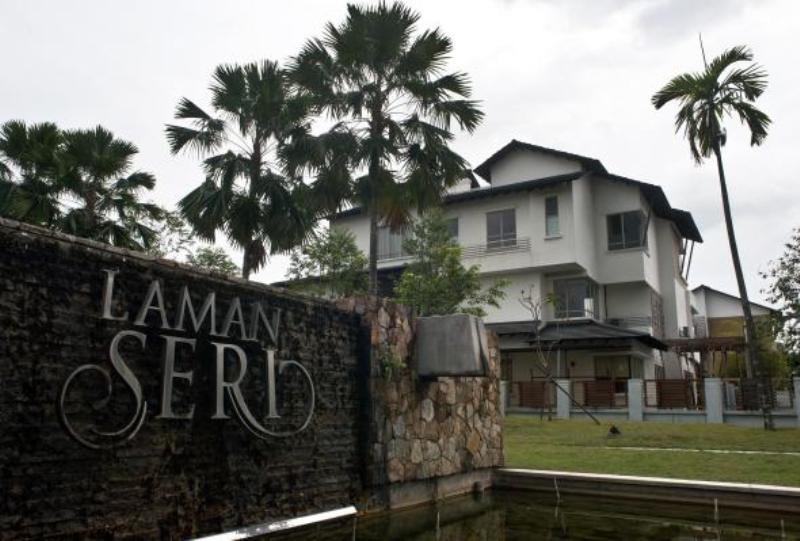 |
| Relationships & More | |
| Marital Status (at the time of death) | Married |
| Family | |
| Wife/Spouse | Faizah Khanum Mustafa Khan Note: Image in children's section. |
| Children | Son- 2 • Ahmad Seth Zaharie • Ahmad Idris Zaharie Daughter- 1 • Aishah Zaharie  |
| Siblings | Brother- 1 • Rawanis Ahmad Shah Sister- 1 • Sakinab Shah 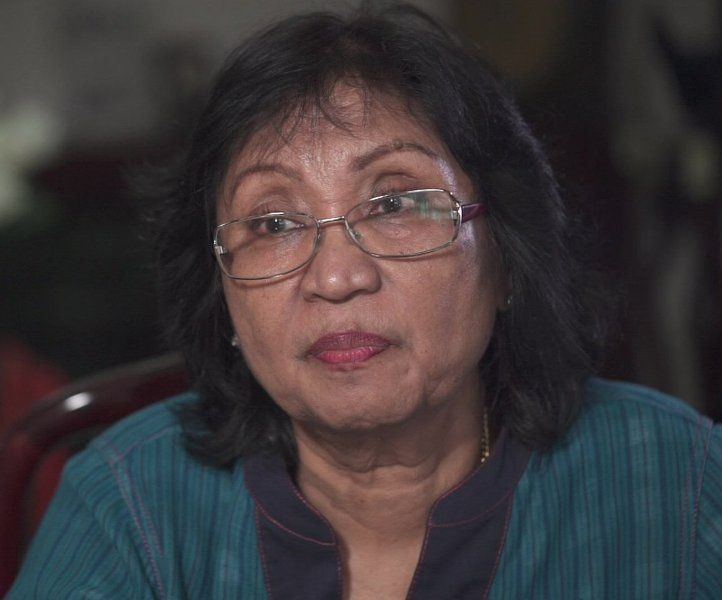 |
| Style Quotient | |
| Car Collection | BMW 5 Series [4]India Today |
Some Lesser Known Facts About Zaharie Ahmad Shah
- Zaharie Ahmad Shah was a Malaysian pilot who disappeared along with Malaysia Airlines Flight 370 on 8 March 2014. The flight was scheduled to travel from Kuala Lumpur International Airport to Beijing Capital International Airport, however, it failed to reach its intended destination.
- After completing his formal education at Penang Free School in Malaysia, Zaharie pursued a career in aviation. He joined Malaysia Airlines on 15 June 1981 as a Cadet Pilot under the sponsorship of Majlis Amanah Rakyat (MARA), a Malaysian government agency. Subsequently, Zaharie travelled to the capital of the Philippines, Manila, where he underwent ab-initio pilot training on completion of which he received a Commercial Pilot License and Instrument Rating (CPL & IR).
- Zaharie commenced airline flying in 1983 as a Second Officer with Malaysia Airlines, gaining his initial experience on the F27 aircraft. In 1985, he was promoted to the position of First Officer of the B737-400 aircraft. He held that role until October 1991. Zaharie later became captain of the B737-400; he served as the captain of the aircraft till 1996. He was then assigned to the A330-300 aircraft which he flew until September 1998. Following this, Zaharie was appointed as the captain of the B777-200 aircraft. In November 2007, he was appointed as a Type Rated Instructor (TRI) and Type Rated Examiner (TRE) for the B777-200 aircraft. He remained the captain of B777-200 until the day of the aircraft’s disappearance, i.e., 8 March 2014.
- On 7 March 2014, Zaharie Ahmad Shah signed in for duty at Kuala Lumpur International Airport in Malaysia. He was on board MH370 as the Pilot-in-Command (PIC) along with Fariq Abdul Hamid, who was the First Officer (FO), on 8 March 2014. The flight was scheduled to travel to Beijing Capital International Airport, China; however, it never landed. Despite various attempts by the Kuala Lumpur Air Traffic Control Centre (KL ATCC) and Ho Chi Minh Air Traffic Control Centre (HCM ATCC), the aircraft could not be tracked, making the authorities speculate that it had disappeared.
- A search and rescue mission was launched in Southeast Asia shortly after the disappearance of MH370; however, when the communication between Flight 370 and the Inmarsat satellite was analysed, the search team was relocated to the Southern Indian Ocean.
- The search operation spanned across the Gulf of Thailand, where the plane’s radar was last detected, and the Andaman Sea, where the military signal last picked it up. Despite repeated search missions and an enormous expenditure of resources, the location of the plane and its passengers remained a mystery. The search for Flight MH370 and its 239 passengers on board, including 12 crew members, was one of the most expensive searches in aviation history.
- On 29 January 2015, the disappearance of the Malaysia Airlines Flight 370 was declared to be an accident and its 239 passengers, including 12 crew members, were declared to be presumed dead by the Government of Malaysia. The Department of Civil Aviation (DCA) Director-General Azharuddin Abdul Rahman announced this at a media conference and said,
It is therefore, with the heaviest heart and deepest sorrow that, on behalf of the Government of Malaysia, we officially declare Malaysia Airlines flight MH370 an accident in accordance with the Standards of Annexes 12 and 13 to the Chicago Convention and that all 239 of the passengers and crew on board MH370 are presumed to have lost their lives.” [5]CNN
- On 29 July 2015, some pieces of marine debris (also known as marine litter), believed to be remains of the missing flight, were discovered on the African coast and nearby Indian Ocean islands.
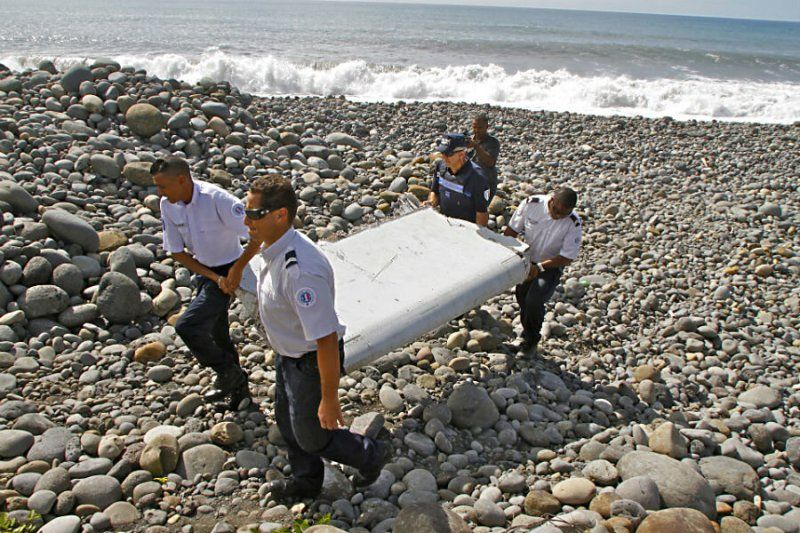
29 July 2015: French police officers while carrying a piece of debris, identified to be of Malaysia Airlines Flight 370, in Saint-André, Réunion
The key pieces of the debris of MH370 were displayed during a ‘Day of Remembrance for MH370’ event in Kuala Lumpur, Malaysia in 2019.
- Zaharie Ahmad Shah loved flying radio-controlled aircraft models.
- He was a non-vegetarian and had a great passion for cooking. He often shared pictures of himself cooking on social media. He was particularly fond of noodle dishes.
- Zaharie Ahmad Shah was an active YouTuber. He used to post several videos about optimising the performance of household appliances. Zaharie liked the content created by an American YouTuber named Taras Kulakov, who goes by the name CrazyRussianHacker on his channel. His demonstrations such as cutting a bottle in half with fire and string won Zaharie’s admiration.
- Zaharie’s love for aviation extended beyond his professional duties. He had a passion for flying that prompted him to spend his leisure time on a self-made simulator. Using a basic setup comprising three computer monitors, a desktop computer, and flight controls, Zaharie modified the simulator to make it more realistic. He reportedly used it to fly virtual routes worldwide. During the investigation into the disappearance of Flight 370, Malaysian authorities seized the simulator, analyzing the data on its hard drive. The analysis revealed that Zaharie had simulated a flight path similar to the one believed to have been taken by Flight 370; however, the simulation did not provide conclusive evidence regarding the cause of the plane’s disappearance.
- Malaysian authorities suspected criminal activity during the investigation of MH370, causing a shift in their approach. They centred their criminal investigation around the cabin crew and pilots of the plane; however, later on, the police cleared all 239 passengers, which included 12 crew members, of any involvement in the case.
- Shah’s behaviour before boarding Flight 370 was reportedly unusual. According to the guards stationed outside Shah’s colony, he greeted them with a military-style salute instead of his customary Muslim salutation; moreover, he chose to drive himself to the airport in his personal BMW 5 series car instead of using the airline cab. His wife, Faizah Khanum Mustafa Khan, accompanied him on the drive to the airport and returned home alone a week after the disappearance of Flight 370 was suspected. [6]India Today
- There have been rumours and speculations about the alleged relationship between Captain Zaharie Ahmad Shah and Malaysian politician Anwar Ibrahim, a former Deputy Prime Minister and opposition leader who was jailed on sodomy charges, which he claimed were politically motivated. According to some reports, Zaharie was a supporter of Anwar Ibrahim and was upset with his imprisonment, leading to his alleged involvement in the disappearance of Flight 370; however, Anwar Ibrahim, in an interview, denied any connection with Zaharie or any involvement in the disappearance of the aircraft. Following an investigation into this case, the Malaysian government denied any political motive behind the disappearance of Flight 370 as no concrete evidence was found during the investigation. [7]Daily Express
- A docuseries titled ‘MH370: The Plane That Disappeared 2023 ‘ was released on Netflix in 2023, shedding light on the disappearance of Malaysia Airlines Flight 370. The documentary series premiered on the disappearance of the flight, i.e., on 8 March 2023.
References/Sources:

